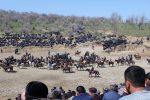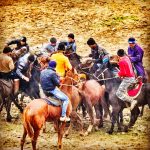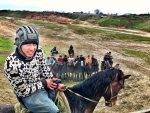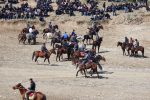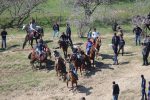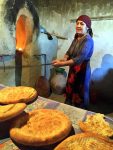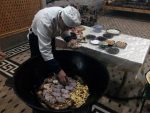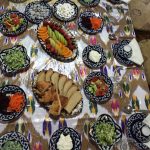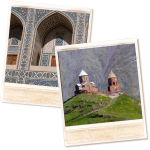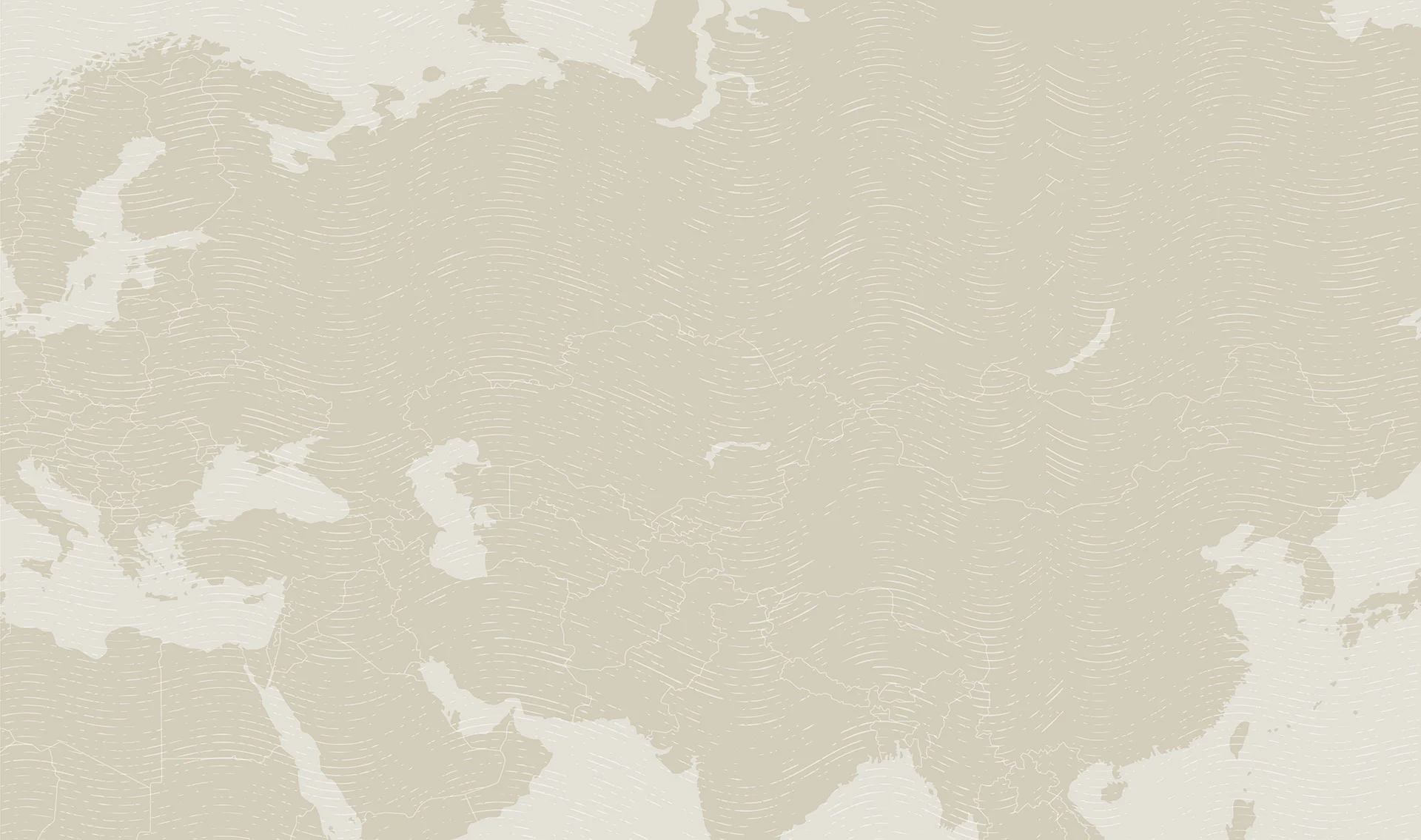Photo credit: Abdu Samadov
Celebrating Navruz in Uzbekistan: My Favorite Moments on a Festive Journey
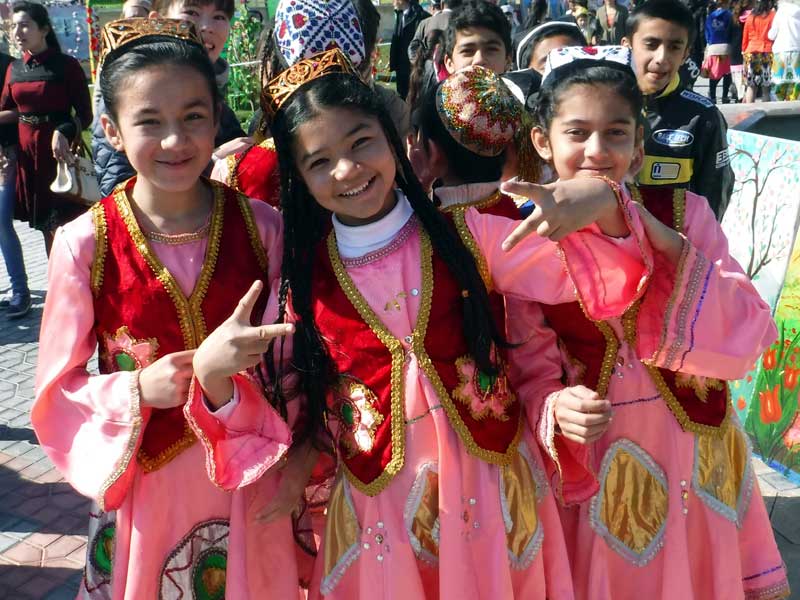
Born and raised in Samarkand, Abdu Samadov is full of inside information about Uzbekistan. He has studied in England and the U.S. and is fluent in English, Farsi, and Russian. Abdu guides MIR travelers throughout Central Asia and enjoys sharing his knowledge. Here, Abdu recounts some of the highlights from his travels with MIR’s small group tour Backstreets & Bazaars of Uzbekistan.
One of my favorite trips to lead as a MIR tour manager is MIR’s small group tour Backstreets & Bazaars of Uzbekistan. The tour is a unique journey to the heart of the Silk Road – Uzbekistan – to explore the bazaars, culture, and cuisine during the spring festival of Navruz.
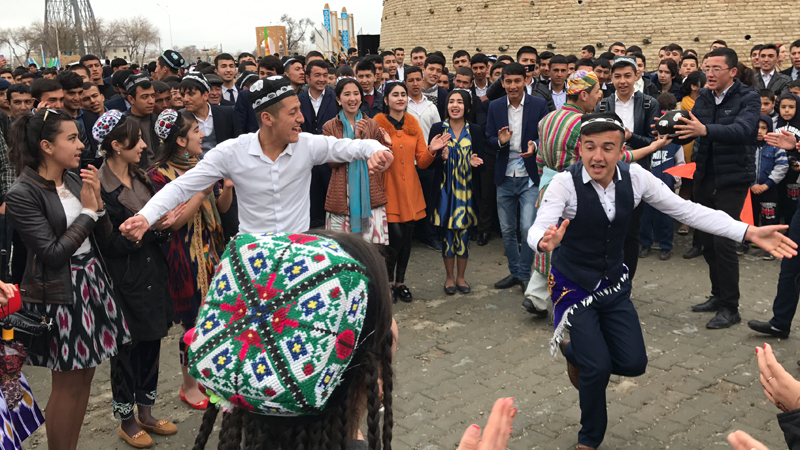
I usually recommend visiting Uzbekistan in September, as the bazaars are vibrant with produce at that time. A variety of fresh fruits like figs, grapes, melons, watermelons, and heaps of fresh vegetables conquer the bazaar stalls and streets as the harvest season reaches its zenith. However, visiting Uzbekistan in spring, during the national holiday of Navruz, makes the experience very special.
Here are some of my favorite moments from the trip.
1. Celebrating Navruz in Bukhara
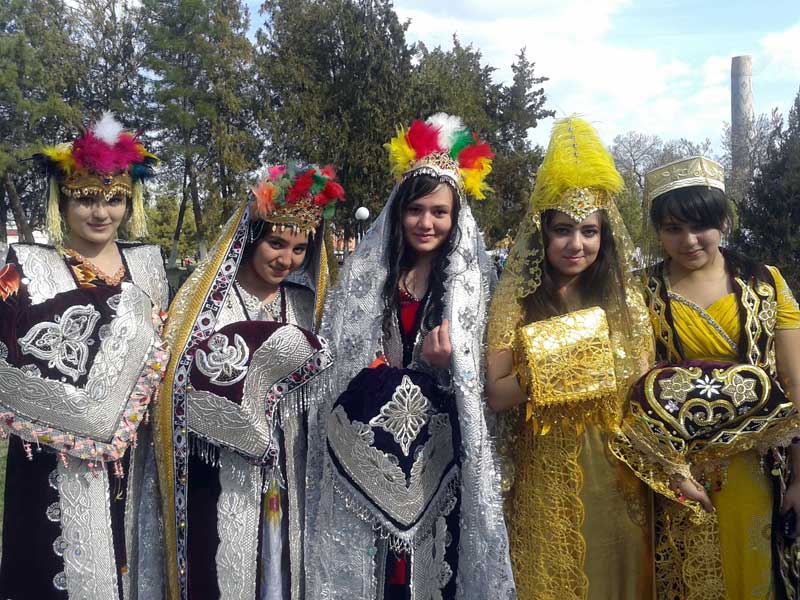
People of Central Asia celebrate Navruz on the first day of spring, March 21, the spring equinox. In the book of the great 11th century scholar and thinker of Central Asia, Abu Rayhan Al-Beruni, he writes about Navruz, considered the central holiday of Zoroastrians as the day when the sun reaches the sign of Aries and awakens nature. Navruz is a time when age-old rituals and traditions come alive in the cities of Uzbekistan.
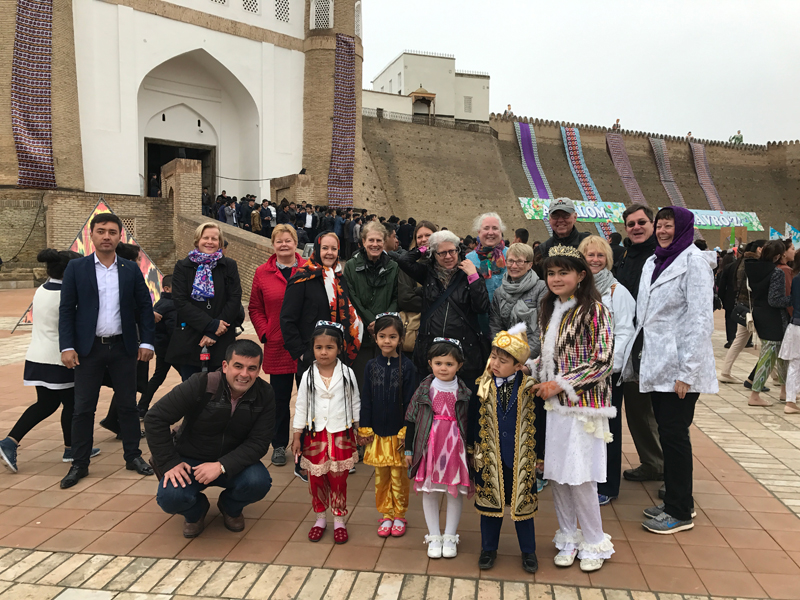
Bukhara is where we really experience the festival in all its finery. We started the day with a walk from the historic craftsmen neighborhood in the Old Town towards the Ark Citadel. The largest public square of the city was already crowded with locals dressed up for the occasion. Villages, universities, and school and community members had laid tables of food for the public around the plaza. Artists and performers entertained the visitors. We came across some schoolchildren, who invited us to participate in their impromptu dance and singing session. Their happiness was contagious, and we were surrounded quickly by a large crowd of friendly local people.
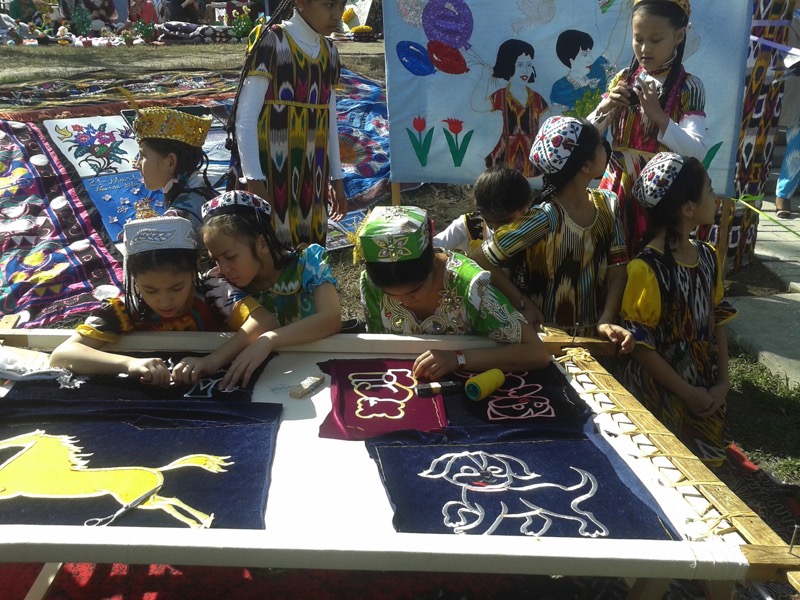
On the day of Navruz, we have festivals and celebrations all around the country. Navruz was restored as a national holiday for Uzbekistan in 1990. During the communist years, this celebration was banned, as it was considered too reminiscent of old history and traditions. Today all the countries in Central Asia mark this day as a national holiday representing the renewal of nature, youthful celebrations, and colorful customs.
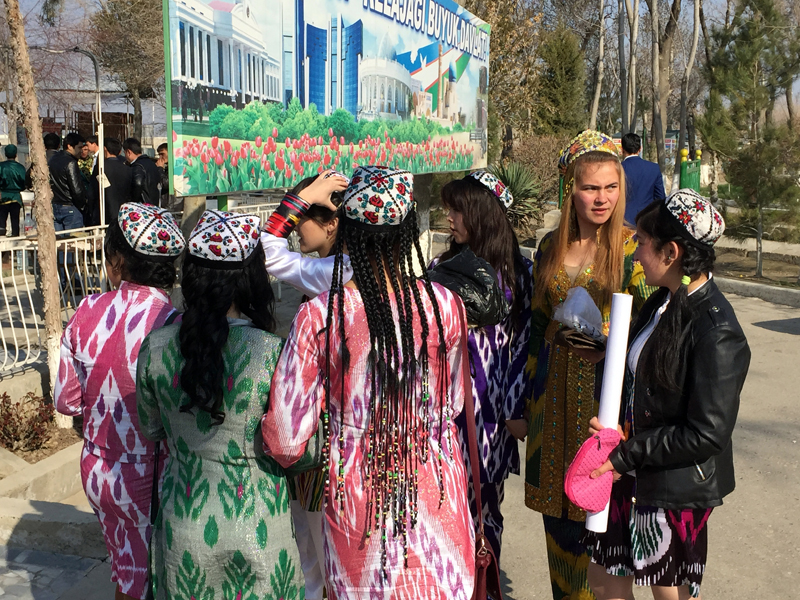
2. Preparing Sumalak in Khiva
As the Navruz celebration nears in Central Asian homes, mothers arrange feasts. Festival tables will have fresh breads, plov (the savory rice concoction that is Central Asia’s favorite dish), samsas (baked stuffed bread pockets), bijak (pastry-based pockets with fresh greens), and sweets.
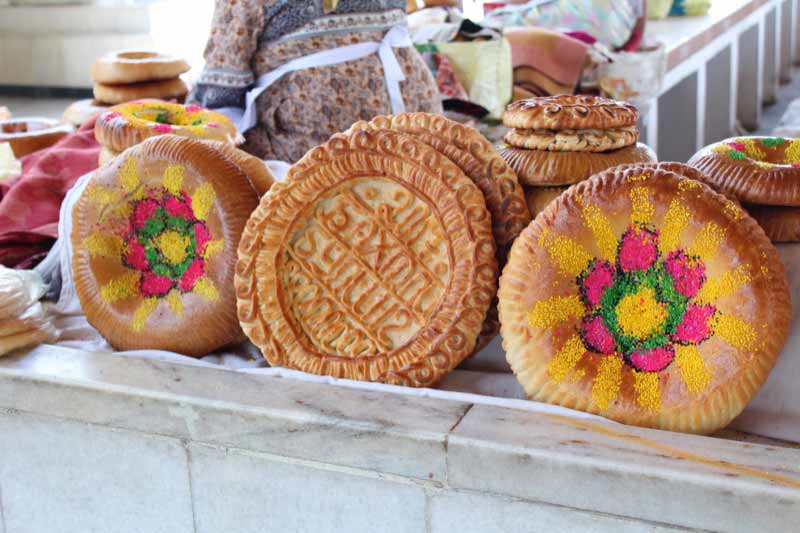
There is a special dish – sumalak – that communities prepare together for the holiday. It is a much esteemed meal, prepared by groups of women while performing special rituals. The sumptuous sweet dish is prepared from the juice of wheat sprouts and flour.
During the process of cooking it for 12 hours overnight, people make wishes as they stir the sumalak in turns. To stay awake, men and women dance and play music all night. The meal is served in the morning to everyone in the neighborhood.
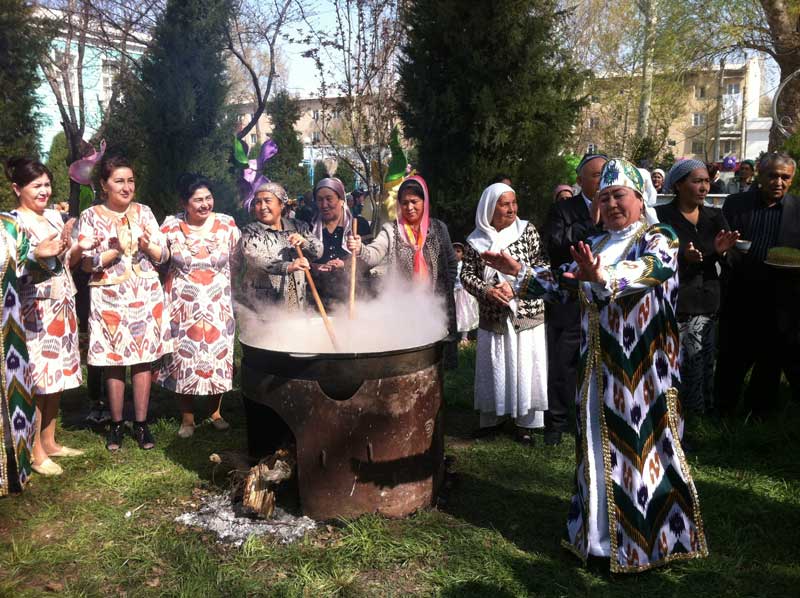
The local people of Khiva invited us to a sumalak party in a local madrassah. Our MIR travelers took turns stirring the boiling sumalak in the cauldron and made their wishes. Then, we had a great time dancing with the local Khivans and chatting with our hosts.
3. Attending a Buzkashi Game in Samarkand
One of the most exciting Navruz festival games of Central Asia is buzkashi. It has other names, such as uloktortish or kok boru, and is played across the region and in Afghanistan on special occasions like holidays and weddings.
Navruz is the best time for a group of strong men on horses to indulge in this sport. They fight for the possession of a dead goat using the drills of polo, horse riding, rugby, and wrestling. History suggests the purpose of this competition was initially to train boys into agile, strong, masculine warriors. The horses were observed, and the strongest were then selected for further breeding.
(click image to view larger photo)
A specially-bred goat is slaughtered a day before the competition, and the carcass is treated with salt and sand so the final weight will be just about 70lbs. (Sometimes a molded 70-lb model is substituted for the goat carcass.) The goal of the competition is for the participants to lift the carcass from the ground and find a way out of the pack to the designated goal post. Sometimes over 600 horseback riders can compete for this single prize, and the combination of a robust horse and resilient and agile rider can spell victory.
Our group witnessed the real deal in the foothills of the Hissar Mountain range. The location of the horse game was specially chosen in celebration of Navruz, as this was the place where Alexander the Great faced a fierce uprising from the strong young men of Samarkand under the leadership of Spitamenes, the 4th century Sogdian warlord. The distant descendants of the general gave our group the feeling of how strong and fearsome the riders are, and how agile the horses are in the region.
4. Cooking, Eating, and Celebrating All Over the Country
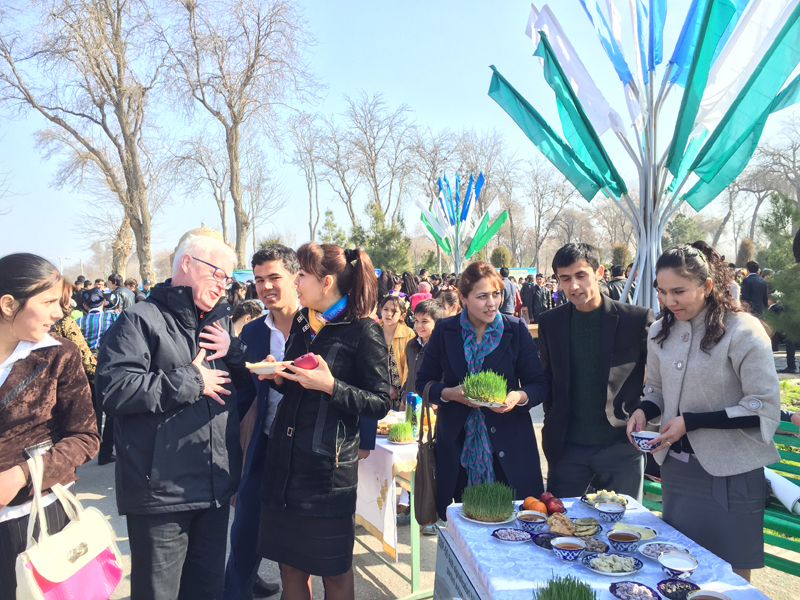
During our travels in Uzbekistan, we were completely surrounded by food. As a group with gigantic gastronomic interest, we took every opportunity to indulge in it.
(click image to view larger photo)
We baked world-famous galaosiyo non bread at a Samarkand home, cooked plov in the home of another Samarkand family, made green dill pasta (shivit ashi) in a madrassah restaurant in Khiva, and prepared hand-pulled noodles, lagman, with a master chef in Tashkent.
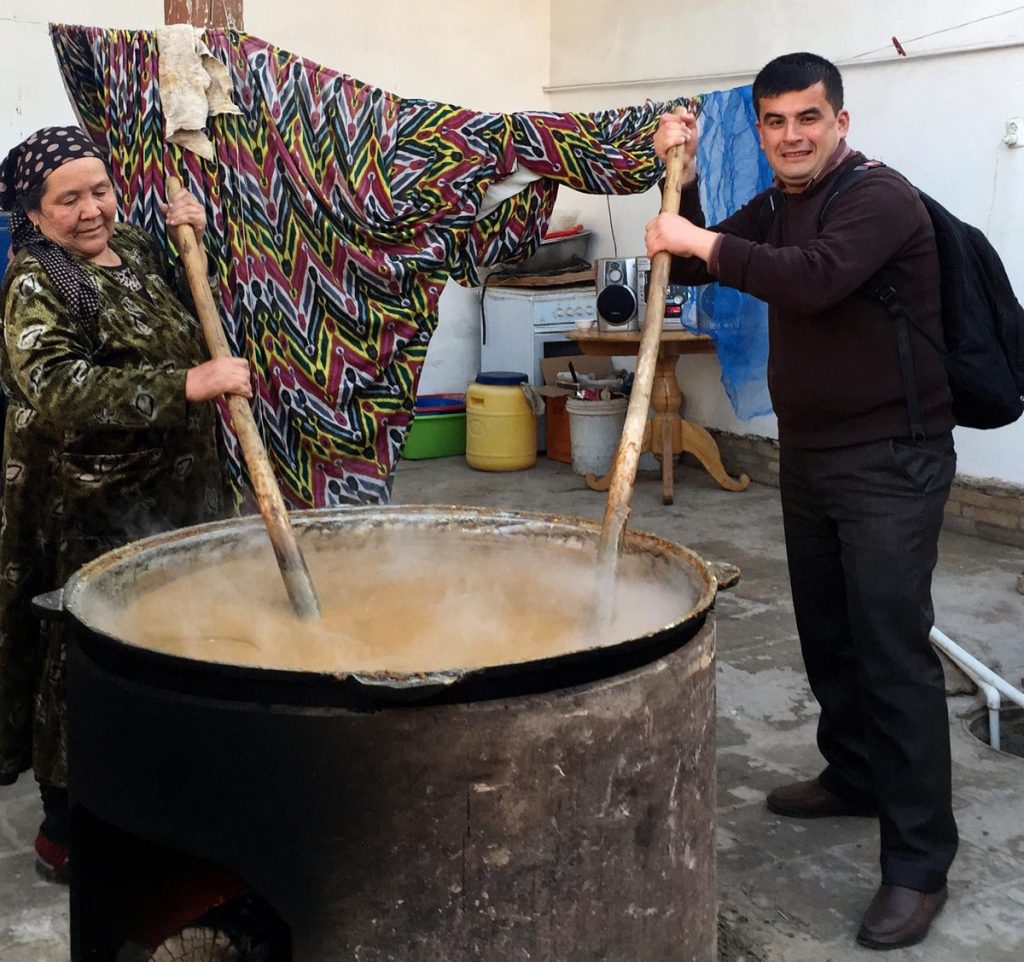
On this tasty tour, we definitely succeeded in plumbing the depths of the brilliant bazaars, the celebratory culture, and the abundant and delicious cuisine on offer during the joyous spring festival of Navruz.
Travel to Uzbekistan with MIR
MIR has more than 30 years of travel experience in Central Asia and has an affiliate office in Uzbekistan, with a roster of contacts that can take you to places that you didn’t even know you wanted to go. Our full service, dedication, commitment to quality, and destination expertise have twice earned us a place on National Geographic Adventure’slist of “Best Adventure Travel Companies on Earth.”
Chat with one of our destination specialists today!
